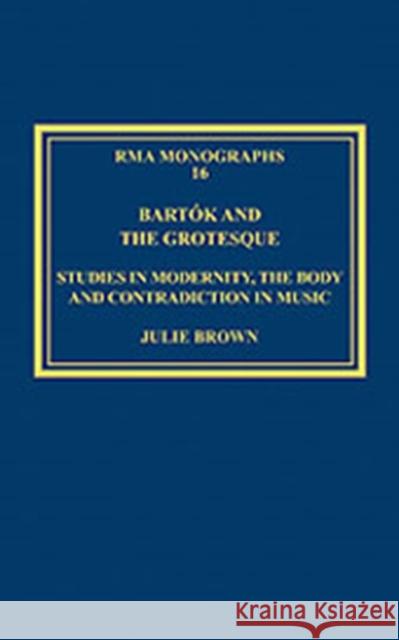Bartók and the Grotesque: Studies in Modernity, the Body and Contradiction in Music » książka
Bartók and the Grotesque: Studies in Modernity, the Body and Contradiction in Music
ISBN-13: 9780754657774 / Angielski / Twarda / 2007 / 192 str.
The grotesque is one of art's most puzzling figures - transgressive, comprising an unresolveable hybrid, generally focussing on the human body, full of hyperbole, and ultimately semantically deeply puzzling. In Bluebeard's Castle (1911), The Wooden Prince (1916/17), The Miraculous Mandarin (1919/24, rev. 1931) and Cantata Profana (1930), BartA3k engaged scenarios featuring either overtly grotesque bodies or closely related transformations and violations of the body. In a number of instrumental works he also overtly engaged grotesque satirical strategies, sometimes - as in Two Portraits: 'Ideal' and 'Grotesque' - indicating this in the title. In this book, Julie Brown argues that BartA3k's concerns with stylistic hybridity (high-low, East-West, tonal-atonal-modal), the body, and the grotesque are inter-connected. While BartA3k developed each interest in highly individual ways, and did so separately to a considerable extent, the three concerns remained conceptually interlinked. All three were thoroughly implicated in cultural constructions of the Modern during the period in which BartA3k was composing.











